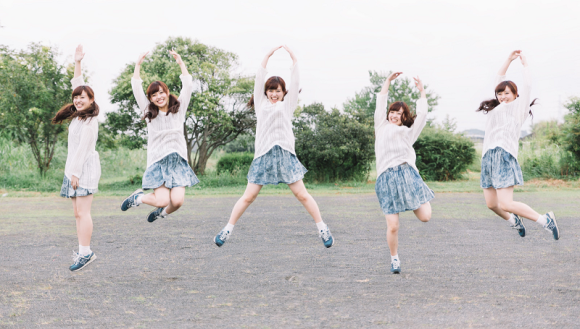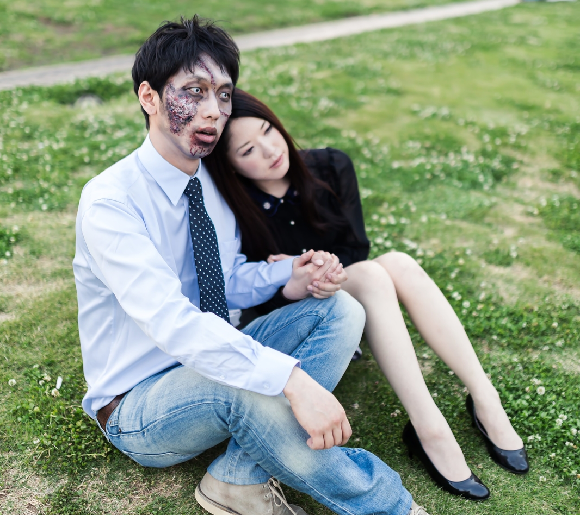
Some would call these anime’s proudest traditions, but not the respondents of a poll who’re craving something different.
Japanese animation is famous for more actively courting the attention of teens and young adults than its western counterpart. That said, anime is still, undeniably, a youth-oriented entertainment medium.
Because of that, when certain tropes or settings strike a chord with viewers in Japan, you can be sure that dozens of other series will do something similar. Yes, this does run the risk of saturating the market with similar content, but many producers are willing to gamble that a large number of fans will have moved on to other, non-anime hobbies by the time a feeling of repetition really sets in, and so they’d better get what economic lifeblood they can from current fans now, and by the safest, most reliable means.
In other words, stick around long enough, and you’ll start to notice patterns aplenty in anime scenarios. Student Internet portal My Navi Gakusei no Madoguchi recently polled 269 college students (129 male and 140 female) who regularly watch Japanese animation and/or read Japanese comics, asking them what anime and manga situations they’re sick of seeing over and over again, and found particularly negative reactions to the following five.
1. Body-swapping
This was actually a bit of a surprising choice. Sure, some moderately high-profile series, like Birdy the Mighty and Kokoro Connect, have involved characters switching or sharing bodies, and it’s the primary hook of mega-hit Your Name, but a lot of casual observers wouldn’t point to this as one of anime’s go-to storytelling devices. Nevertheless, many of the survey respondents said they’ve already seen enough works that fall into this category. One woman wrote the genre off with “You know what’s going to happen,” and apparently has no desire to sit through another anime where the two souls learn to appreciate each other’s differences through joint body custody.
2. Time travel
Time travel series have been picking up steam, with the convention showing up in Re:Zero, Steins;Gate, and Puella Madoka Magica. “There’s a surprising sameness to [time travel anime],” declared one respondent, and she might have a point, as stories in this category almost always end up funneling the narrative towards a last-ditch attempt to avoid butting up against an unwanted future.
3. Harems
“They’re almost all exactly the same,” lamented one respondent, a problem which gets exacerbated by the current standard of 13-episode anime seasons. Introduce the main character, add potential romantic partners at the rate of one character per episode through meet cute or meet sexy moments, and by the time the harem is stocked, and there’s not much time left for anything of import to happen before the show has to wrap up.
4. Alternate world stories
Whisking the protagonist from our world to a parallel dimension where a grand adventure awaits is a quick and easy way to build a sense of mysterious tension and exotic excitement, but it’s also a tactic anime writers have been relying on since at least 1983’s Aura Battler Dunbine. “They’re boring, since you know what’s going to happen next,” grumbled one male respondent, with another giving the more specific complaint of “Eventually some god-like being makes an appearance, and that just spoils the fun.”
5. Bringing characters back from the dead
For a medium that’s extremely comfortable portraying violence, anime can sometimes be rather reluctant to let its stars rest in peace. “You just know they’re not actually dead,” said one male respondent.
The modern anime era, in which revenue generated from character merchandise is such an important channel of lifeblood for anime production companies, means that killing off a popular character is often a poor economic move, even if it’s an interesting narrative one. Resurrecting heroes and heroines isn’t exclusive to newer shows, though, as if you were an anime fan in the ‘90s you saw major characters in Dragon Ball Z, Sailor Moon, and Fushigi Yugi eventually shake off death like it was just a particularly nasty cold.
Still, that doesn’t change the fact that participants in the survey wish that some characters, and some of these storytelling patterns, would just die already.
Source: My Navi Gakusei no Madoguchi via Nico Nico News via Jin
Top image: Pakutaso
Insert images: Pakutaso (1, 2, 3, 4, 5)
Follow Casey on Twitter, where he says no matter how much you hate alternate world stories, you should still watch Escaflowne.






 What’s more important in making a great anime, characters or story? Japanese fans sound off
What’s more important in making a great anime, characters or story? Japanese fans sound off Five anime/manga series praised by Japanese fans for their realistic human relationships【Survey】
Five anime/manga series praised by Japanese fans for their realistic human relationships【Survey】 Japanese college students share four ways anime high school is different from real high school
Japanese college students share four ways anime high school is different from real high school Large portion of Japanese fans are willing to drop an anime after one bad episode, survey says
Large portion of Japanese fans are willing to drop an anime after one bad episode, survey says Goku down! Vast majority of surveyed college students in Japan haven’t read the Dragon Ball manga
Goku down! Vast majority of surveyed college students in Japan haven’t read the Dragon Ball manga Foreigner’s request for help in Tokyo makes us sad for the state of society
Foreigner’s request for help in Tokyo makes us sad for the state of society Japanese city loses residents’ personal data, which was on paper being transported on a windy day
Japanese city loses residents’ personal data, which was on paper being transported on a windy day Ghibli Park now selling “Grilled Frogs” from food cart in Valley of Witches
Ghibli Park now selling “Grilled Frogs” from food cart in Valley of Witches Osaka governor suggests lowering voting age to 0 to curb population decline
Osaka governor suggests lowering voting age to 0 to curb population decline Sandwiches fit for a sumo served up in Osaka【Taste Test】
Sandwiches fit for a sumo served up in Osaka【Taste Test】 Japan’s cooling body wipe sheets want to help you beat the heat, but which work and which don’t?
Japan’s cooling body wipe sheets want to help you beat the heat, but which work and which don’t? Harajuku Station’s beautiful old wooden building is set to return, with a new complex around it
Harajuku Station’s beautiful old wooden building is set to return, with a new complex around it Historical figures get manga makeovers from artists of Spy x Family, My Hero Academia and more
Historical figures get manga makeovers from artists of Spy x Family, My Hero Academia and more Beautiful Red and Blue Star luxury trains set to be Japan’s new Hokkaido travel stars
Beautiful Red and Blue Star luxury trains set to be Japan’s new Hokkaido travel stars Smash Bros. director Sakurai stabs Kirby in the face, has delicious justification for it
Smash Bros. director Sakurai stabs Kirby in the face, has delicious justification for it McDonald’s new Happy Meals offer up cute and practical Sanrio lifestyle goods
McDonald’s new Happy Meals offer up cute and practical Sanrio lifestyle goods Japanese ramen restaurants under pressure from new yen banknotes
Japanese ramen restaurants under pressure from new yen banknotes French Fries Bread in Tokyo’s Shibuya becomes a hit on social media
French Fries Bread in Tokyo’s Shibuya becomes a hit on social media Studio Ghibli releases new action figures featuring Nausicaä of the Valley of the Wind characters
Studio Ghibli releases new action figures featuring Nausicaä of the Valley of the Wind characters New private rooms on Tokaido Shinkansen change the way we travel from Tokyo to Kyoto
New private rooms on Tokaido Shinkansen change the way we travel from Tokyo to Kyoto Red light district sushi restaurant in Tokyo shows us just how wrong we were about it
Red light district sushi restaurant in Tokyo shows us just how wrong we were about it Tokyo Tsukiji fish market site to be redeveloped with 50,000-seat stadium, hotel, shopping center
Tokyo Tsukiji fish market site to be redeveloped with 50,000-seat stadium, hotel, shopping center All-you-can-drink Starbucks and amazing views part of Tokyo’s new 170 meter-high sky lounge
All-you-can-drink Starbucks and amazing views part of Tokyo’s new 170 meter-high sky lounge Beautiful Ghibli sealing wax kits let you create accessories and elegant letter decorations【Pics】
Beautiful Ghibli sealing wax kits let you create accessories and elegant letter decorations【Pics】 Studio Ghibli releases Kiki’s Delivery Service chocolate cake pouches in Japan
Studio Ghibli releases Kiki’s Delivery Service chocolate cake pouches in Japan New definition of “Japanese whiskey” goes into effect to prevent fakes from fooling overseas buyers
New definition of “Japanese whiskey” goes into effect to prevent fakes from fooling overseas buyers Our Japanese reporter visits Costco in the U.S., finds super American and very Japanese things
Our Japanese reporter visits Costco in the U.S., finds super American and very Japanese things Studio Ghibli unveils Mother’s Day gift set that captures the love in My Neighbour Totoro
Studio Ghibli unveils Mother’s Day gift set that captures the love in My Neighbour Totoro More foreign tourists than ever before in history visited Japan last month
More foreign tourists than ever before in history visited Japan last month New Pokémon cakes let you eat your way through Pikachu and all the Eevee evolutions
New Pokémon cakes let you eat your way through Pikachu and all the Eevee evolutions Sales of Japan’s most convenient train ticket/shopping payment cards suspended indefinitely
Sales of Japan’s most convenient train ticket/shopping payment cards suspended indefinitely Sold-out Studio Ghibli desktop humidifiers are back so Totoro can help you through the dry season
Sold-out Studio Ghibli desktop humidifiers are back so Totoro can help you through the dry season Japanese government to make first change to romanization spelling rules since the 1950s
Japanese government to make first change to romanization spelling rules since the 1950s Ghibli founders Toshio Suzuki and Hayao Miyazaki contribute to Japanese whisky Totoro label design
Ghibli founders Toshio Suzuki and Hayao Miyazaki contribute to Japanese whisky Totoro label design Doraemon found buried at sea as scene from 1993 anime becomes real life【Photos】
Doraemon found buried at sea as scene from 1993 anime becomes real life【Photos】 Tokyo’s most famous Starbucks is closed
Tokyo’s most famous Starbucks is closed One Piece characters’ nationalities revealed, but fans have mixed opinions
One Piece characters’ nationalities revealed, but fans have mixed opinions We asked a Uniqlo employee what four things we should buy and their suggestions didn’t disappoint
We asked a Uniqlo employee what four things we should buy and their suggestions didn’t disappoint Princesses, fruits, and blacksmiths: Study reveals the 30 most unusual family names in Japan
Princesses, fruits, and blacksmiths: Study reveals the 30 most unusual family names in Japan Do Japanese men like it when real women speak in anime-style voices? Survey investigates
Do Japanese men like it when real women speak in anime-style voices? Survey investigates Japan’s 25 most popular cat names
Japan’s 25 most popular cat names Japanese college women pick between men who’re short and handsome or tall and plain in survey
Japanese college women pick between men who’re short and handsome or tall and plain in survey Is work more important to Japanese salarymen than their girlfriends? Survey investigates
Is work more important to Japanese salarymen than their girlfriends? Survey investigates Grab the tissues: Preteens and teens pick the anime that makes them cry the most
Grab the tissues: Preteens and teens pick the anime that makes them cry the most Food, sleep, or sex? Survey asks Japanese people which they can’t live without
Food, sleep, or sex? Survey asks Japanese people which they can’t live without Why can’t anime heroes dodge the attacks from angry female characters who swing hammers at them?
Why can’t anime heroes dodge the attacks from angry female characters who swing hammers at them? Survey asks Japanese women if they could date a man who earns less money than they do
Survey asks Japanese women if they could date a man who earns less money than they do Japanese men pick their favorite Studio Ghibli anime heroine 【Survey】
Japanese men pick their favorite Studio Ghibli anime heroine 【Survey】
Leave a Reply